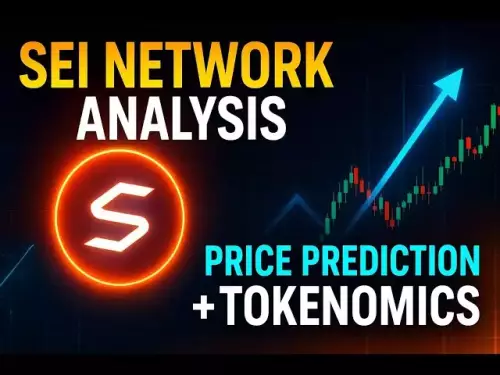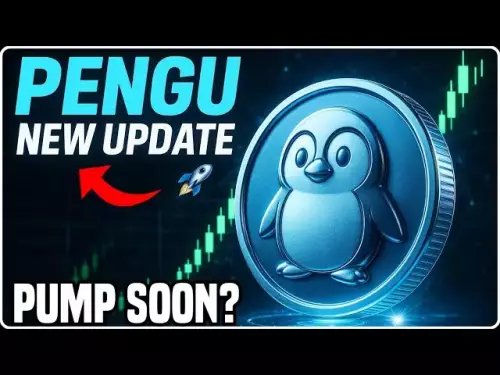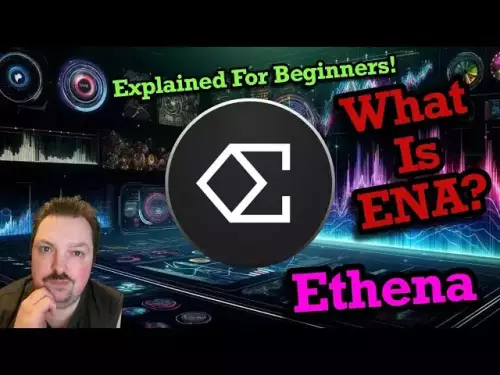 |
|
 |
|
 |
|
 |
|
 |
|
 |
|
 |
|
 |
|
 |
|
 |
|
 |
|
 |
|
 |
|
 |
|
 |
|
Icon(ICX)上一次成为头条新闻,当它与Tron和Filecoin竞争时,它是ICO泡沫的高峰
![]()
At the height of the ICO bubble, ICON (ICX) was making headlines for its high-profile bidding war with Tron and Filecoin to buy BitTorrent.
在ICO泡沫的高峰期,ICON(ICX)与Tron和Filecoin高调竞标战争成为头条新闻,以购买Bittorrent。
However, despite early promise as the “Korean Ethereum,” ICON struggled to maintain relevance amid fierce competition and a changing narrative.
然而,尽管早期承诺是“韩国以太坊”,但在激烈的竞争和叙事变化的情况下,偶像仍在努力保持相关性。
Now, the project is back in the news as it has rebranded to SODAX and is migrating its entire DeFi infrastructure from its own Layer-1 blockchain to Sonic, an EVM-compatible network known for high-speed, low-cost transactions.
现在,该项目又重新命名为SODAX,并将其整个Defi基础架构从其自己的第1层区块链迁移到Sonic,这是一个以高速,低成本交易而闻名的EVM兼容网络。
Sonic itself is a rebranded Fantom, which began in 2024.
Sonic本身是一个更名的幻想曲,始于2024年。
In an interview with CoinDesk, ICON founder Min Kim explained the logic behind shifting from running an independent blockchain to effectively outsourcing that part of the operation to Sonic’s Layer-1 infrastructure.
ICON创始人Min Kim在接受Coindesk的采访中解释了从独立区块链转移到有效将操作外包到Sonic Layer-1基础架构的逻辑。
“Back in 2017, we had to build our own Layer-1 because there wasn’t any other infrastructure available,” Kim said. “Today, buying and maintaining your own Layer-1 property just doesn't make sense anymore because there are cheaper, better options available.”
金说:“早在2017年,我们就必须建立自己的1层,因为没有其他基础设施可用。” “今天,购买和维护自己的Layer-1属性已经不再有意义了,因为有更便宜,更好的选择。”
According to Kim, outsourcing infrastructure to Sonic allows his team to streamline expenses and sharpen their strategic focus on DeFi products.
根据Kim的说法,将基础设施外包给Sonic使他的团队可以简化费用并加强对Defi产品的战略关注。
“It significantly cuts our operating expenses by millions of dollars,” Kim told CoinDesk. “There's less inflation for our tokens, and all of this just makes financial sense.”
“这大大削减了我们的运营费用数百万美元,”金告诉Coindesk。 “对于我们的代币,通货膨胀率较小,所有这些都是财务上的意义。”
This isn't all that dissimilar from the manufacturing world. Foxconn and Taiwan Semiconductor are billion-dollar companies because firms like Apple and Nvidia don't have their own factories.
这与制造世界并不是什么不同的。富士康和台湾半导体是十亿美元的公司,因为苹果和Nvidia等公司没有自己的工厂。
Similarly, ICON no longer needs to bear the high fixed costs and risks associated with running an entire blockchain.
同样,图标不再需要承担与运行整个区块链相关的高固定成本和风险。
“Maintaining a decentralized network with validators around the world is a huge undertaking,” Kim explained. “We have eight years of experience running our own Layer-1. It's tedious, costly, and very stressful. Outsourcing to Sonic allows us to focus on innovation and delivering products that people actually want.”
金解释说:“与世界各地的验证者保持分散的网络是一项巨大的事业。” “我们有八年的经营经营自己的第1层的经验。这是乏味,昂贵且非常压力的。外包给Sonic,我们可以专注于创新和交付人们真正想要的产品。”
Kim also highlighted the risk reduction benefits, noting that ICON’s DeFi layer can remain unaffected by infrastructure issues at Sonic, creating a valuable risk separation.
Kim还强调了降低风险的收益,并指出Icon的Defi层可能不受Sonic的基础设施问题的影响,从而创造出宝贵的风险分离。
“There's de-risking,” he explained. “If Sonic gets hacked, obviously it’s bad, but it’s not directly our fault. Sonic focuses solely on security and validator infrastructure, so we and other DeFi builders can focus on creating applications closer to end-users.”
他解释说:“有疾病的风险。” “如果Sonic被黑客入侵,显然这很糟糕,但这不是我们的错。Sonic仅着眼于安全和验证器基础架构,因此我们和其他Defi构建者可以专注于更接近最终用户的应用程序。”
The strategy comes as ICON seeks to reinvent itself amid diminished market influence. Once a top 20 cryptocurrency, ICON’s ICX token crashed nearly 99% from its all-time highs by late 2018, and has since not recovered, according to CoinGecko data, as investors moved toward platforms better able to capitalize on the rise of DeFi and NFTs.
该策略是因为偶像试图在市场影响下减少的情况下重塑自己。 Coingecko Data称,曾经是前20名加密货币,ICON的ICX代币在2018年末越来越高99%,此后一直没有恢复,因为投资者向平台迈进了能够利用Defi和NFTS的崛起,而投资者可以更好地利用平台。
“Layer-1 infrastructure just doesn't make sense for most projects,” Kim argued. “Many underestimated the effort, the capital expenses involved. There's been a misguided premium investors placed on Layer-1 projects, thinking an ecosystem would naturally build itself. But that’s costly and rarely sustainable.”
金说:“对于大多数项目而言,第1层基础架构并没有意义。” “许多人低估了努力,所涉及的资本费用。在1层项目上有一个误导的高级投资者,认为生态系统自然会建立自己。但这是昂贵且罕见的可持续性。”
Now rebranded as SODAX and focused on cross-chain liquidity products, the project is migrating ICX tokens to a new token, SODA. While Sonic and SODAX’s tokens remain distinct, Kim emphasized that Sonic’s fee-monetization mechanisms will channel transaction fees back to SODA holders.
现在,该项目将ICX令牌迁移到新的代币苏打水。尽管Sonic和Sodax的令牌仍然很明显,但Kim强调,Sonic的收费机制将使交易费用回到苏打持有人。
“Sonic allows 90% of transaction fees to flow back to SODA token holders,” Kim noted, underscoring the economic incentive of their strategic pivot.
金说:“ Sonic允许90%的交易费用回到苏打式代币持有人。”
Asked if this outsourcing model represents a broader trend, Kim predicted that many projects currently running Layer-1s will likely reconsider as market cycles shift.
当被问及该外包模型是否代表着更广泛的趋势时,Kim预测,随着市场周期的变化,当前运行1层的许多项目可能会重新考虑。
“Ethereum and Solana are great examples as they’re fully focused on validators and network security," he said. "We’re at the forefront of reversing the trend of launching your own Layer-1s. It’s just not viable for most projects long-term.”
他说:“以太坊和索拉纳是一个很好的例子,因为它们完全专注于验证者和网络安全。” “我们在推出自己的第1层趋势的趋势中处于最前沿。对于大多数项目而言,这是不可行的。”
As the era of premium valuations for proprietary Layer-1 platforms ends, more projects, Kim said, are going to just focus on the product and not the infrastructure with ICON – now SODAX – leading the way on this.
金说,随着专有层1平台的高级估值时代的结束,更多的项目将只关注产品,而不是Icon的基础架构(现在是Sodax)引领了这一目标。
“We’re going back to basics, lowering our costs, streamlining operations, and doubling down on what we originally wanted to do: put financial products directly into people’s hands.”
“我们要回到基础知识,降低成本,简化运营,并将我们最初想做的事情加倍:将金融产品直接投入人们手中。”
免责声明:info@kdj.com
所提供的信息并非交易建议。根据本文提供的信息进行的任何投资,kdj.com不承担任何责任。加密货币具有高波动性,强烈建议您深入研究后,谨慎投资!
如您认为本网站上使用的内容侵犯了您的版权,请立即联系我们(info@kdj.com),我们将及时删除。
-

- Tether's Usat:一个新的稳定冠军,倡导美元
- 2025-09-13 02:03:38
- Tether推出了USAT,这是美国的Stablecoin,这表明了对合规性和数字时代美元持久力量的承诺。
-

-

-

-

-

-

- VFX令牌预售在Cardano:改变游戏规则的人?
- 2025-09-13 01:09:01
- VFX代币在Cardano上是一个千载难逢的机会吗?该博客探索了嗡嗡声,使潜在的收益与市场现实权衡。
-

-































































